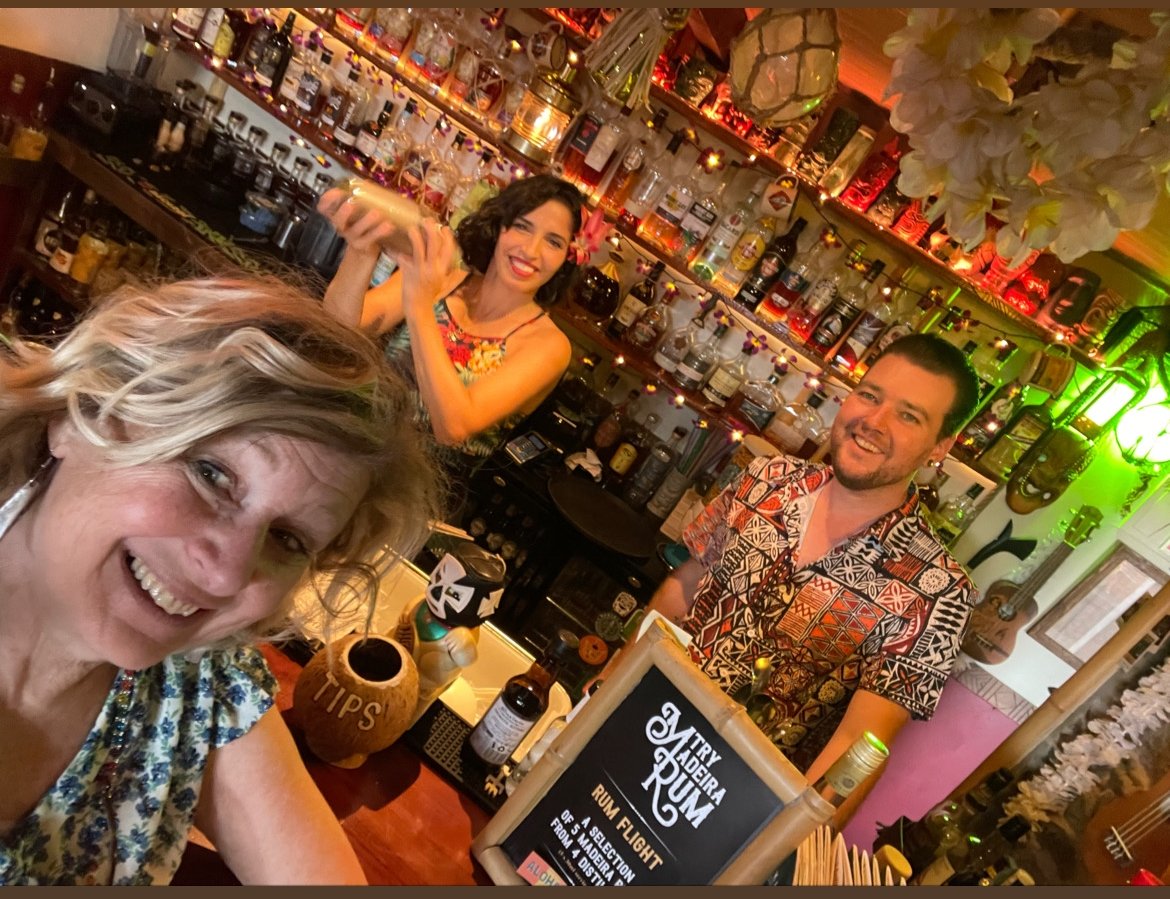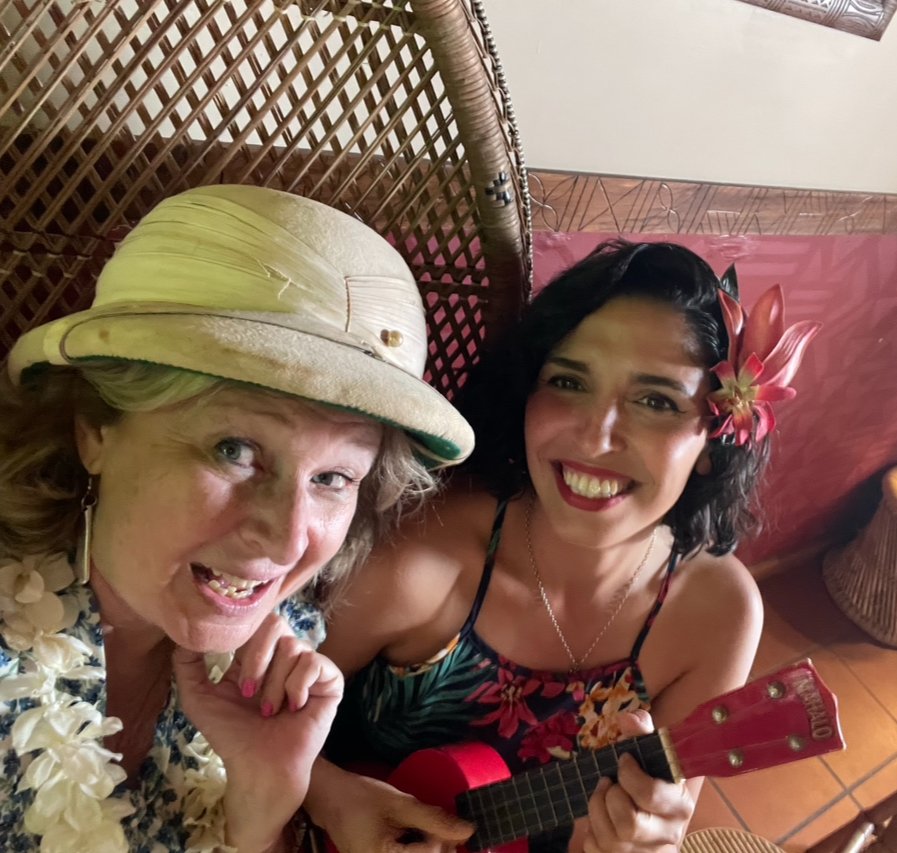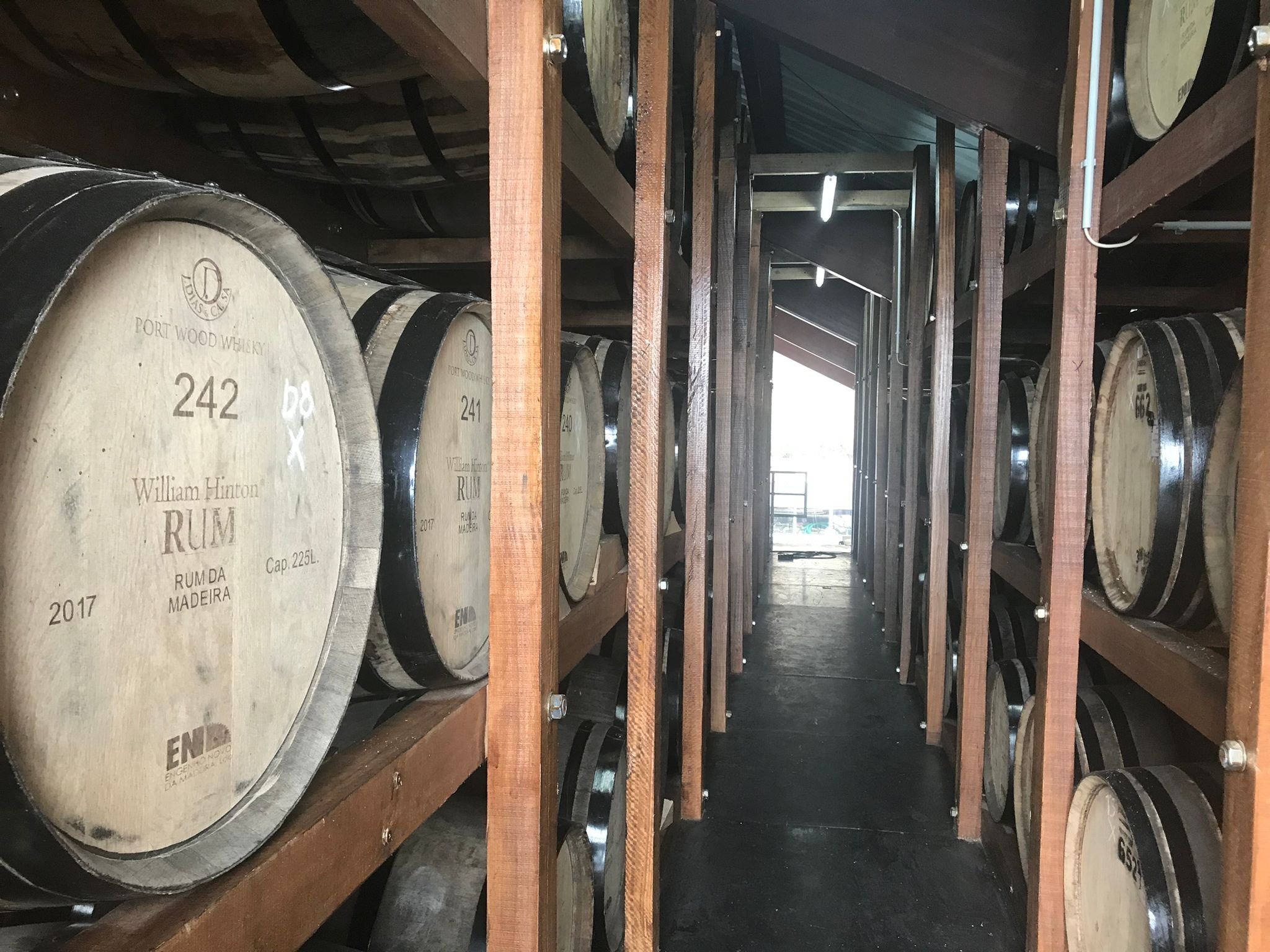Top trip of 2023: Madeira
My fave trip of the entire year was to this subtropical island, I published this article for Excellence Magazine.
Madeira has an exotic allure; it’s always fascinated me. This Atlantic island is closer to Africa than it is to Europe, and theAn island in the Atlantic, closer to Africa than it is to Europe, and a territory belonging to Portugal. Always interested in exploring the local spirits, I’m here to discover all about Madeira wine and rum production. The designation is difficult to obtain: the rum must be from sugar cane juice instead of molasses. The French Caribbean and Overseas Departments can use this name but in 2019, Madeira was granted this appellative.
Estalagem do Ponte do Sol by night
My hotel on the island was Estalagem do Ponte do Sol, a clifftop hotel overlooking the seaside town. The manager, Andre Diogo, is an art lover and modern works tastefully dot the property. It is also a popular yoga retreat, and the lush grounds emanate an air of serenity. A meal outdoors, with a glass of Madeira wine, while witnessing the sunset is a truly unforgettable experience.
Estalagem do Ponte do Sol, a clifftop wonder
The island is lush and mountainous, and sugar cane has been cultivated here since 1425. My driver Roberto told me that the sugar cane cultivation was exported to Hawaii and the Caribbean from this little island, but the facts are lost to the mists of time. One thing is sure: sugar cane cultivation in Madeira is probably the most backbreaking job in the world. Since the majority of the sugar cane is grown on small plots of land, often terraced, the harvesting must be done by hand. No tractor or machine can navigate the steep terrain here. I visited the William Hinton distillery, not the largest producer on the island but certainly the highest, when it comes to altitude. Named for an English family, the company was founded in 1845, closed in 1986, and was resurrected by Hinton’s Madeiran heirs in 2006.
The cane fields
Mario Gomes was my guide, and part of his orientation tour for me was to discover the island itself, visiting the Skywalk on the cliffs of Cabo Girão, a glass walkway jutting out over a cliff 4580 meters above sea level. To the left we observed a man cultivating a small plot of sugar cane: he makes about 100 euro per day for his labor. The cane harvest, called “soca”ends in May, when the cane is cut and transported to the processing facility. Next we made a stop to a little poncha stand. Poncha is the typical drink of the island, and here it is made by hand, glass by glass. The traditional poncha is called the fisherman’s, and its ingredients are lemon peel, white sugar and rum. There are as many versions as there are poncha shops and most of the more recent versions use sugar and honey. The most special one is the tangerine poncha, made from the sweet citrus fruits that ripen in December.
At the poncha shop with Mario and two friends - the walls are filled with business cards— and a sharlafied sticker.
At Pukiki with Carla and Martin
Another stop with Mario was to a little tiki bar called Pukiki in the middle of nowhere. Pukiki celebrates the connection with Hawaii and Madeira. Pukiki is the name Hawaiians gave to the Madeiran settlers who went to the South Pacific to work the sugar cane fields. Inside was a collection of Hawaiian memorabilia and some luscious cocktails made with love.
At the William Hinton distillery, I watched the machines used to break open the cane and crush itA to extract the juice. The juice is fermented and distilled,, and the aguardiente can be bottled. Some of Hinton's rum is aged in barrels ranging from peated whiskey to Amarone, to beer, each cask imparting a unique taste profile to the liquid. The beauty is that every single cask offers a different taste experience", said Gomes. Then we try the ultra-premium 25 year old rum, taken from the old distillery before it was demolished, mixed with 6 year editions, then aged two years in Sherry casks. Phenomenal.
William Hinton aging barrrels
Madeira wine has a fascinating story. Legend has it that sailors, after a trip to India, using wine kegs as ballast, stopped in Madeira for supplies. The wine was found to be better after trips over the equator and for centuries wine was sent on long sea voyages to age. Madeirans found a way to replicate this on the island and Madeira wine was born. I visited the Blandy’s Madeira Wine Lodge in Funchal for a tour, conducted by our able guide Tatiana. John Davis Blandy founded the company in 1811 and today the company is run by the seventh generation of the family. I accessed the VIP tasting room lined with vintage bottles, the oldest dating back to the 1920’s. I tried four excellent 10 year olds, with great variety: there is a Madeira for every phase of the meal, from a light before dinner sip to a rich and plummy after- dinner drink.
A tasting at Blandy’s
Funchal is a thriving tourist town and my hotel was the Savoy Palace, part of a veritable village of hotels overlooking the Atlantic. The interiors were designed by Nini Andrade Silva with nods to the rich Madeiran artisan heritage. The showstopper was the spiral staircase featuring a steel balustrade in steel that resembling lace. Premium rooms feature butler service and a private pool. Galáxia Skyfood is both a fine dining restaurant as well as a bar, with a cool space-centric décor.
The dramatic staircase at the Savoy Palace.
Premium rooms feature butler service and dedicated floors with access to a private pool and dining room. The Eden-like grounds feature rare flora, and the central pool is crossed by a lacy bridge. Galáxia Skyfood is both a fine dining restaurant as well as a bar, with a cool space-centric décor .
In Funchal, I visited the Madeira Rum House and Roberto offered me a full tasting… and a ride to visit Reizinho the next day… when they should have been closed. His Rum house was so cosy and we listened to old jazz tunes on his record player as the tasting continued. Roberto even made me a little poncha.
Next, I visited Revolucion Rock Bar where Telma and Miguel served me the rich man’s poncha made with honey and Telma made me a brulè cocktail that I cracked with a spoon to open.
Telma and Miguel at Revolucion
O Rezinho is a small family run distillery , located in the small town of Santa Cruz. The name means means Little King, and Pedro Ferreira tells us that it is the name goes back to the time of his great grandfather in the 1800s. He was born at 7 months, literally a death sentence in those days. Instead of calling a doctor, the family called a priest to baptize the infant. The priest prayed over the baby and called him a little king (Reizinho), who would soon join the kingdom of heaven. Miraculously, the baby survived, he fathered 14 children, and lived until the age of 94. O Rezinho was the perfect name for Pedro’s rum. The operation was started as a hobby by Pedro’s father, and the son, living in South Africa wwas urged by his wife Nevena to scale back and move to Madeira. Two children later, the family home now has two discontinuous wood fired stills and production is swiftly growing. Pedro’s white rum is aged 9 months. He makes three 3 year old varieties and one six year, as well as one gin. His attention to detail has garnered him numerous awards. Small batches guarantee a robust demand--you could actually taste the love that went into his newest 3 year release.
Pedro tends to the fire-stoked still
Sugar cane production on the island is falling because the younger generation does not want to continue this extremely difficult work. The government pays farmers a subsidy but it is often not enough. Real estate speculation has made a plot of land very lucrative to a farmer and many plots have been sold. Despite the difficulties, Madeira Agricultural Rum is gaining popularity for being a unique product of excellence. Both Madeira Wine and Rum are under the jurisdiction of the IVBAM, a governing body regulating the quality and assisting in the promotion of these and other artisanal products such as local embroidery and crafts. Through this organization, Madeira can bolster its position as a natural paradise, not just for its stunning landscape, but also for the richness of its artisanal gifts to the world.
There is so much more to say about this standout trip: about my amazing lunch at Three House in Funchal, my introdution to rum at The Small House in Ponte do Sol, watching the wooden sled rides down the hillside, the cliffs, the waterfalls, the ocean, the green, the warm hospitality everywhere… I was absolutely captivated, and I will be back!
Links:
@estalagempontadosol
@savoypalace
@williamhintonrum
@blandysmadeirawine
@o_reizinho
@three.house.club
@revolucionrockbar
@madeirarumhouse
@pukikibar
@thesmallhousevintage
@excellenceluxurymagazine












